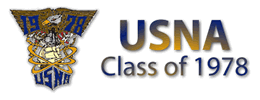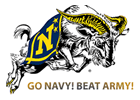Steve Jacoby lived a life of bold action.
Born and raised in Alton, Ill., he grew up dreaming of flying airplanes. He got his pilot”s license at age 15, before he was old enough to get his driver”s license. Steve, throughout his life, was fearless ” and flying was one way to demonstrate just how fearless.
Steve”s brother Scott Jacoby said that when their mother would drop Steve at the local airport to practice flying, she”d tell him to call her when he was finished to come pick him up.
”She used to get so mad at him because in the summer he would fly over the house and he would cut the engine and open the door and holler down to my mom, ”come and get me,”” Scott said.
Steve attended the United States Naval Academy in Annapolis, Md., where he trained to fly F-14s, the fighter planes that the bravest, fastest pilots fly. And he was an apprentice Blue Angel ” the pilots who dazzle at the annual Air Show above San Francisco Bay.
But he grew four more inches after age 18 topping out at 6-foot-4 ” too tall to safely eject from the cramped cockpit of an F-14. After serving his term in the military, he had to trade that dream for a career as a corporate pilot.
Though he loved flying, Steve was ready to leave the military when he did. Those were the days even before ”Don”t Ask, Don”t Tell,” the military policy ” thrown out in 2010 ” that allowed gay people to join the military as long as they kept their sexual orientation a secret. Though he was a private person, Steve Jacoby believed in honor and doing the right thing, and didn”t think he needed to lie about being gay.
After his service in the military concluded, Steve joined United Airlines as a commercial pilot, flying routes from Los Angeles to Hawaii and Chicago, and later from San Francisco to Asia.
In May 1985, however, when 5,200 pilots walked off the job in opposition of a two-tier salary scale that they saw as unfair to them and new hires, Steve joined many of the 570 trainee pilots in a strike that would last 29 days and cost United Airlines hundreds of millions of dollars.
Steve stood up to represent the trainee pilots and talked about doing what was right. He continued working for United Airlines after the strike ended.
Steve was handy, which may have been what drew him to volunteer with Habitat for Humanity Los Angeles (now Habitat for Humanity Greater Los Angeles) building affordable homes. But he also had a deep commitment to service, said Kent Bloom, Steve”s former partner.
When Steve moved to San Francisco in 1989, it was the last major city that did not have a Habitat for Humanity chapter. Even the founder of Habitat for Humanity International, Millard Fuller, in a story recounted through the years at Habitat Greater San Francisco, told San Francisco Habitat founders that Habitat for Humanity wouldn”t work here. Land was too expensive. Housing prices were too high.
Soon after Steve settled into his life in San Francisco, he was placed on medical leave with United Airlines.
He volunteered for Glide Church many afternoons.
But fate brought Steve back to Habitat for Humanity. Steve was a passenger on a flight, heading to Newark to attend a charity benefit when he recognized Rosalynn Carter, wife of former President Jimmy Carter, sitting in first-class.
Steve passed a cocktail napkin to the flight attendant who handed it to Mrs. Carter”s secret service agent. The note said:
”Dear Mrs. Carter, Thank you and the President”s support for Habitat for Humanity.”
Mrs. Carter waited in the jet bridge to meet him and challenged him to bring Habitat for Humanity to San Francisco.
Several board members who were on the original Habitat San Francisco steering committee remember hearing the story that Steve started Habitat for Humanity San Francisco after meeting Mrs. Carter. It was the tipping point for Steve Jacoby to do at least one more bold thing with his remarkable life.
Steve, along with Tom Cantrell, organized and facilitated a public informational meeting on May 29, 1991 at Stationary Engineers Union Hall on Valencia Street. A 12-member steering committee was formed out of that first meeting and that would become the catalyst for 23 years of Habitat for Humanity in San Francisco.
It”s Steve”s signature on the early meeting minutes from June 28 and July 19 when the steering committee members accomplished the critical and sometimes menial tasks required to start a Habitat for Humanity affiliate like setting up a phone line ($19.95 a month for three months), finding office space and recruiting the 12 board members that were required to meet Habitat International rules.
Steve was elected president of the first board on September 12, 1991 and filed in the meeting minutes from those early days is a personal letter Steve signed four days later to fellow board member David Thompson thanking him for his role in Habitat San Francisco”s formation.
”The addition of your energy to the Steering Committee and dedication to the Habitat philosophy are the seeds of success that will have allowed Habitat for Humanity a foothold in San Francisco,” Steve wrote.
Steve knew he would die from AIDS when he started Habitat for Humanity San Francisco. That was back before the drug treatments that help many of those who contract HIV today to live long, healthy lives. But there was only one approved drug ” AZT – back then and it didn”t work for many.
Steve travelled to say goodbye to his parents in Illinois during the same summer that he was charging ahead with Habitat for Humanity San Francisco.
On September 24, 1991 Steve presided over the first meeting of the board as elected president with an agenda including defining directors” and committee roles. Habitat for Humanity San Francisco would become a reality.
Less than two weeks later, Steve died, October 5, 1991, at his home. Before he died, he told the Habitat board and his former partner that any obituary written about him should include that his cause of death was AIDS. This request was also recorded in Habitat for Humanity”s meeting minutes.
Francis DuBose, an original steering committee and board member of Habitat San Francisco, retired professor at Golden Gate Seminary, who passed away in 2009, said of Steve:
“His spirit was contagious. He inspired the group with his knowledge of Habitat for Humanity, his own previous involvement as a volunteer, his feel for the philosophy behind the movement, and his passion to see it happen, even in San Francisco”the last major city in the country without an affiliate.”
David Thompson, who was elected the next president after Steve, said San Francisco”s Habitat for Humanity was founded by people of many different backgrounds in terms of race, religion and sexual orientation who cared deeply that all of San Francisco could be included in the mission to bring affordable homeownership to people who needed it.
”We decided right from the get-go that they (Habitat for Humanity International) had to come in on our terms or we wouldn”t do it. Those terms had to do with not only nondiscrimination in regards to sexual orientation but also religion,” Thompson said.
Habitat for Humanity Greater San Francisco proudly carries on that legacy. In tribute to a man who helped this organization establish its values, and who, without his effort, San Francisco may have never had a Habitat for Humanity affiliate.
In remembering Steve”s life, Kent says of Steve: ”He just believed in service. And he believed in Habitat for Humanity.”

